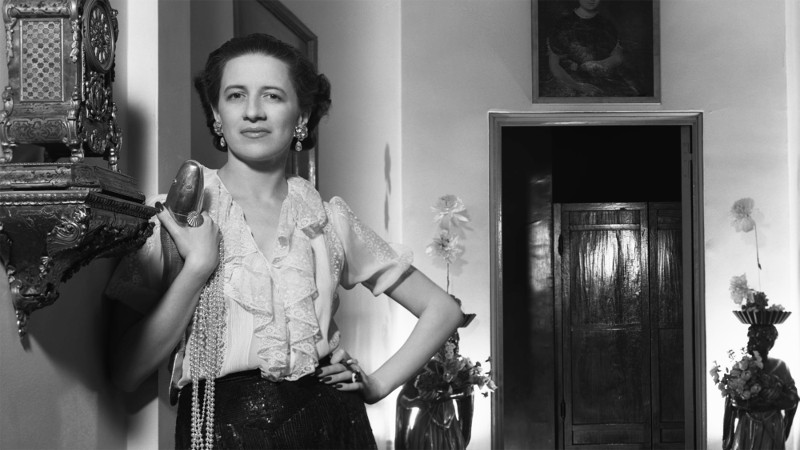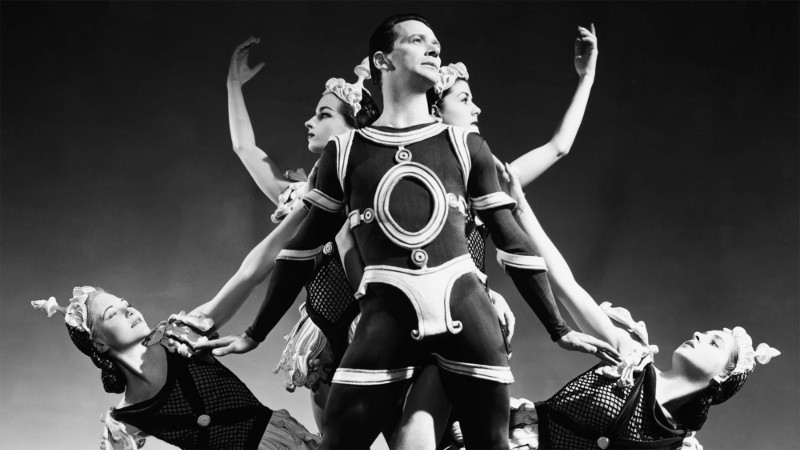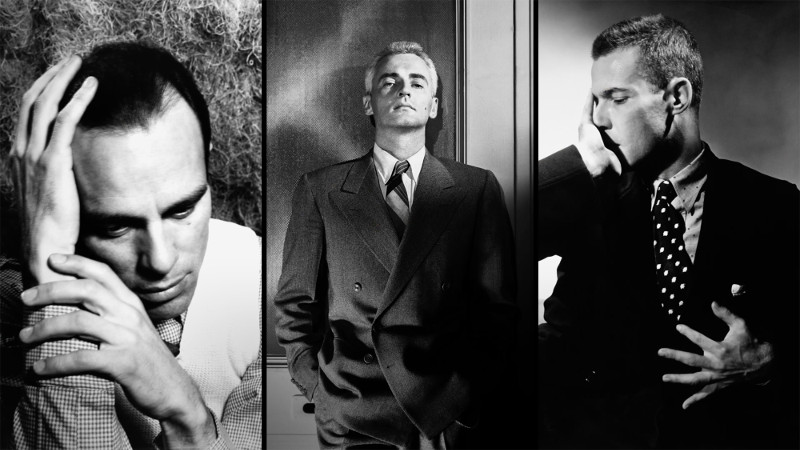
The life of the singular, visionary photographer George Platt Lynes (1907-55) was a brief, intense, whirlwind. Lynes packed a lot into his 47 years—working, partying, boldly living an openly gay life, creating a remarkable archive of work—and then apparently destroying portions of it. He interacted with a fascinating array of notable, seminal figures in arts-and-literary milieus of his day. All of this is illustrated in Hidden Master: The Legacy of George Platt Lynes, a compelling, if uneven, documentary directed by Sam Shahid and released May 31 by Greenwich Entertainment.
Coming to the film familiar mainly with Lynes’s iconic photography of early Balanchine ballets and dancers, primarily from the 1940s, I had much to learn. Nick Mauss’ memorable 2018 Whitney Museum exhibition Transmissions included enough of Lynes’s incredibly sensual, sculptural photos of male nudes to make me aware of the greater scope of his artistic sensibility and talents.
Shahid, as the documentary’s director, has a clear agenda – to expand the awareness of these bold, beautiful and courageous images and make his case for Lynes as a landmark artist whose deeply personal vision involved courageous risk-taking and opening doors for those who followed.

The timing of Lynes’s career was fortuitous. His attending the same prep school as Lincoln Kirstein is just one example the film proffers of his good luck in terms of where he spent time, and with whom at pivotal developmental phases. He came from a straight-laced Episcopalian family in Englewood, New Jersey (his father was a minister), yet they funded a life-altering year in Paris when he was 18 – a gap year before entering Yale.
Finding himself amidst the historic artistic cross-pollination that was Paris of the mid-1920s, Lynes was a regular at the salon of Gertrude Stein. Her special fondness for him continued in an extensive correspondence once Lynes returned to the United States, particularly through his decision to abandon Yale after one year, finding it “intellectually dull.”

Perhaps Lynes sensed that he had no time to waste. A self-taught photographer, he found early success with striking fashion images and celebrity portraits. Not only in New York but in frequent return trips to France, he photographed notable artists and literary figures, including an iconic book-cover image of Stein. The film flashes—at too rapid a pace—through Lynes’ stunning portraiture of Tennessee Williams, Carmen Miranda, Yul Brynner, Cecil Beaton. Igor Stravinsky, Dorothy Parker, Gloria Swanson, E.M. Forster, Aaron Copland, T.S. Eliot, among others.
His considerable success with high-profile fashion assignments led to being included in the Museum of Modern Art’s first-ever photography exhibition. But the work that represented his true passion and visionary boldness was his gorgeously constructed, deeply erotic black-and-white images of the male figure in various stages of undress – and often fully nude with genitalia on display. These images have gleaming elegance, and joyfully celebrate erotic male beauty.

Lynes himself was strikingly good-looking. “He was obsessed with beautiful people because he knew he was one of them,” says one of scholars, historians, former associates, even former lovers, who contribute interviews to the documentary.
Lynes belonged to what was clearly a thriving, confident community of gay men. This defies the conventional wisdom that, prior to Stonewall and gay liberation, everyone was in the closet. One speaker says of the circles in which Lynes moved: “They’re a model for a group of friends who are creating culture together—as artists from the 30s and ‘40s ripe for rediscovery.” Another says, “They made their own rules” as Lynes is seen in carefree photos alongside such luminaries as Paul Cadmus. Cecil Beaton, Pavel Tchelitchew and Christopher Isherwood.
The brief portion of the film that touches on Lynes’s now-celebrated ballet photos feels perfunctory. Photos of dancers Maria Tallchief, Nicholas Magallanes, John Kriza and others in ballets like Firebird, Orpheus, Concerto Barocco, Filling Station, Billy the Kid – pass too quickly to be absorbed, with no one identified – and, inexplicably, the “Blue Danube Waltz” as accompaniment. This is just unacceptable as scholarship. The statement that Lynes became “the ballet’s official photographer for 30 years” is puzzling, given that he had less than two decades to live when he first worked with Balanchine and Kirstein.

By the late 1940s, Lynes’ seemingly glamorous and carefree life became embroiled in financial difficulties, the fracturing of a series of passionate relationships, and other difficulties. His fashion work started to fall out of favor as newcomers like Richard Avedon began to eclipse him. In an ill-advised move to Los Angeles, where, despite having work from Condé Nast and taking glorious portraits of Burt Lancaster, Kirk Douglas, Farley Granger and Louis Jourdan, he lived beyond his means. Missing New York terribly, his return was marked by more financial struggle and increasingly poor health.

A fascinating aspect of the documentary is Lynes’s unlikely connection with famed sex researcher Alfred Kinsey, who attended all-male parties as a voyeur as research for his study Sexuality and the Human Male. By the early 1950s—as increased repression, HUAC hearings and the Lavender Scare superseded the more freewheeling, uninhibited era—Lynes, concerned about the fate of his treasured archive of nude male images, donated it to the Kinsey Institute in Indiana which now maintains this prized collection.
Lynes found great beauty in black and white—to the extent that when the later portions of the film introduce more color images, especially garish-colored footage of male pool parties, one longs for a return to the elegance and poetry of that black-and-white world. That world may be many decades removed from ours, but Lynes’s striking images retain their glorious impact, ideally, on generations to come.
: photos courtesy of A Precious Few LLC.
HIDDEN MASTER: THE LEGACY OF GEORGE PLATT LYNES | in theatrical release May 31
Susan Reiter covers dance for TDF Stages and contributes regularly to the Los Angeles Times, Playbill, Dance Australia and other publications.

Absolutely marvelous writing by Susan Reiter. Thank you, Susan.